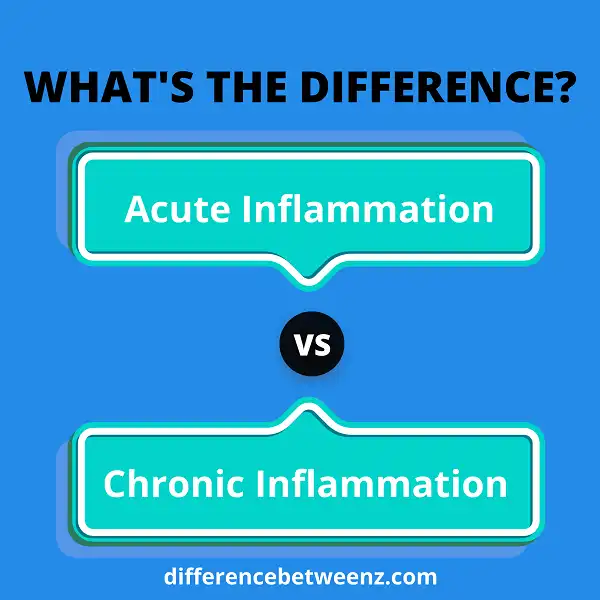Acute inflammation is the body’s natural response to injury or infection. It’s a short-term, protective response that helps the body heal. Chronic inflammation, on the other hand, is a long-term condition that can damage tissues and organs. In this blog post, we’ll take a closer look at the difference between acute and chronic inflammation, and we’ll explore some of the factors that contribute to chronic inflammation.
What is Acute Inflammation?
- Acute inflammation is the body’s natural response to injuries, infections, and other irritants. The immune system releases chemicals that increase blood flow to the affected area and help to fight off foreign invaders.
- This increased blood flow causes the characteristic redness and swelling of acute inflammation. Acute inflammation is a short-term response that helps to protect the body from further harm. However, if it becomes chronic, it can lead to tissue damage and other health problems.
- Therefore, it is important to be aware of the signs of acute inflammation and to seek medical treatment if necessary. Acute inflammation is a natural and essential part of the healing process, but it can also be dangerous if left unchecked.
What is Chronic Inflammation?
Chronic inflammation is a type of inflammation that occurs over a long period of time. It can be caused by infection, autoimmune disease, or other conditions. Chronic inflammation can lead to a number of health problems, including heart disease, arthritis, and cancer. Treatment for chronic inflammation typically involves medication, but lifestyle changes such as diet and exercise can also be helpful. In some cases, chronic inflammation may resolve on its own. However, it is important to see a doctor if you are experiencing any symptoms of chronic inflammation.
Difference between Acute Inflammation and Chronic Inflammation
Acute inflammation is a natural process that occurs when the body is wounded or infected. In response to injury, the body releases chemicals that cause the blood vessels to widen and the area around the injury to swell. This increased blood flow allows white blood cells and other infection-fighting cells to reach the site of injury more quickly. Acute inflammation also helps to remove damaged tissue and debris from the wound site.
Chronic inflammation, on the other hand, is a long-term process that occurs in response to recurring injuries or chronic infections. Unlike acute inflammation, chronic inflammation does not resolve itself and can actually do more harm than good. The constant presence of inflammatory chemicals can damage healthy tissue and lead to the formation of scar tissue. Additionally, chronic inflammation can weaken the immune system and make the body more susceptible to infections. While acute inflammation is a natural and necessary process, chronic inflammation can be harmful to the body.
Conclusion
Acute inflammation is a short-term response that occurs after an injury or infection. It is usually marked by swelling, redness, heat, and pain. Chronic inflammation, on the other hand, is a long-term condition that can persist for years. It is often less visible than acute inflammation, but it can be just as damaging to the body. In this blog post we’ve explored the difference between these two types of inflammation. We hope you now have a better understanding of what each one entails and how they can differ in their effects on the body.


